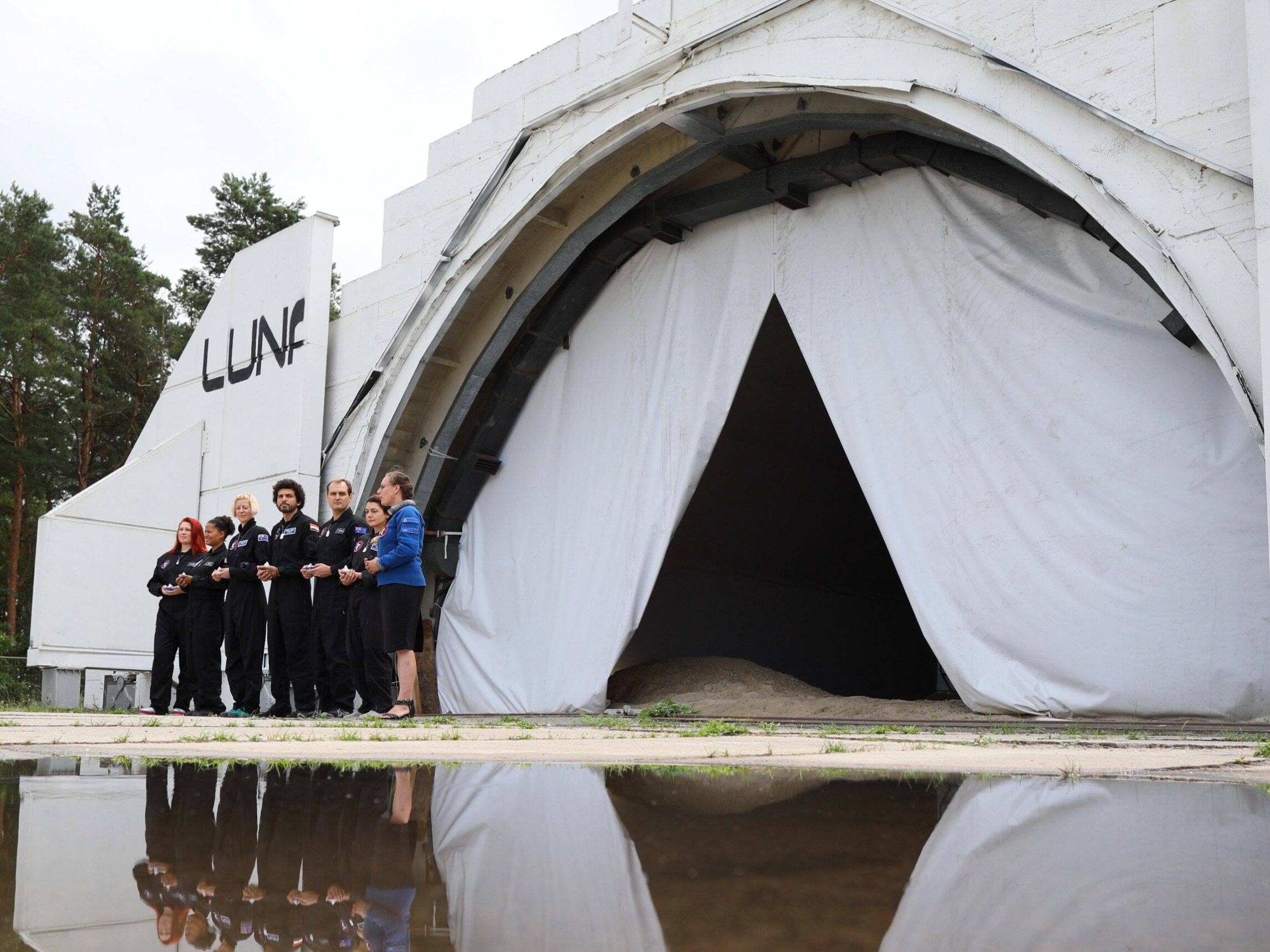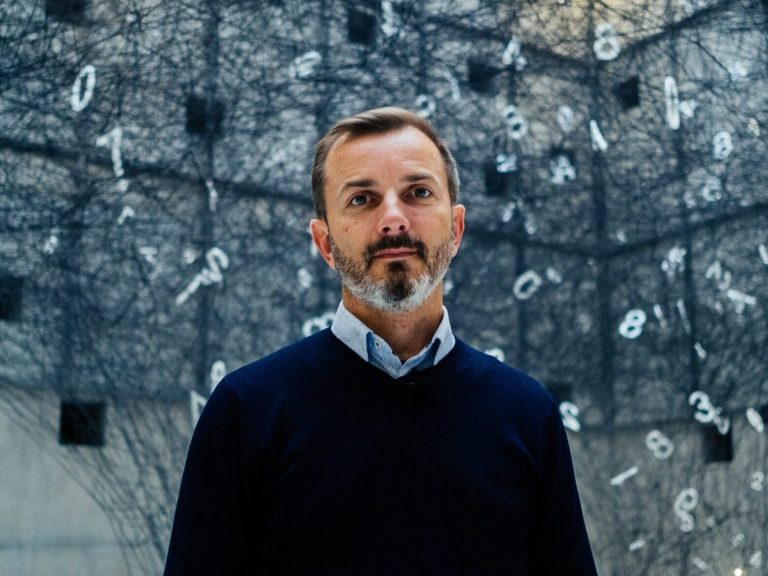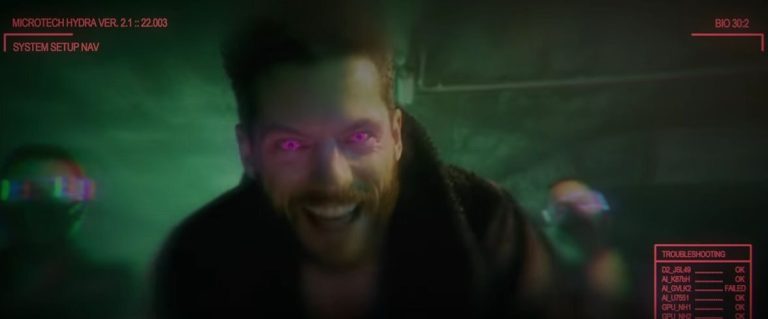Here you can feel like you are on the moon. An unusual space “base” at the former airport in Piła

Habitat Lunares has been operating at the former military airport in Piła for six years, where simulated space missions to the Moon and Mars take place. Two researchers who visited the base have already flown into space. – We have broken through to a certain mainstream in space research – says the habitat’s director, Leszek Orzechowski, in an interview with “Wprost”.
Aleksandra Gieracka, “Wprost”: Habitat Lunares, a research station where simulations of space missions are conducted, has been operating on the premises of the former military airport in Piła for six years. Where did the idea for such a place come from? How did it all start?
Leszek Orzechowski, director of Habitat Lunares: As the Space is More team at the Wrocław University of Science and Technology, we were young space architects and since 2013 we have been taking part in competitions related to space architecture. People were then wondering how to send people to the Moon or Mars using available technology. Reports were prepared on what such a mission should look like and we, as architects, also had something to add. In 2015, we won the European Space Agency competition, which focused on how to return to the Moon soon. This project turned out very well.
Various scientists from Poland contacted us then and said that it would be great to create such an analog habitat for research, and we succeeded. We obtained financing, created a project, founded a company and in 2017 our first simulations were launched.
There was no such facility in Europe before. What makes it unique?
It’s a simple, container-like structure. This is not a prototype of a space base, but an isolation laboratory where the entire space is similar to a space base. People live there, work there, have laboratories and places to sleep. We also have a large aircraft hangar where you can conduct simulated spacewalks. Our facility has very good equipment and we collect data very carefully. But the most important thing is that there are real people out there who are isolated.
How does such a simulated space mission work?
Training lasts one week and isolation lasts two weeks. During the simulation, mission participants are locked in and cannot go outside. They have no access to natural light or access to social media. They only contact us.
Who uses the habitat?
The main users are psychologists, sociologists and doctors, but technological equipment was also tested there, e.g. by the German Space Agency and various international companies. But many Polish institutions also conduct research here.
Specialists from many fields of science are involved in the research conducted at the facility. What are they primarily focused on?
For many years, the Pomeranian Medical University has been conducting research in the field of diet and dentistry, for example how different diets affect the behavior of dental plaque in isolation, the production of saliva, but also the bacterial flora. In turn, the University of Silesia conducts research in the field of group dynamics, psychology and sociology. Now the University of Zurich has joined them. We tested equipment for examining astronauts on the space station, prepared by the German Space Agency, for example for eye examination, where it is known that astronauts’ eyesight slowly deteriorates in microgravity.
What type of research then translates into actual space missions?
We don’t train astronomers, we only conduct research on people. Various procedures of existing equipment were tested on real people operating in a simulated mission, thanks to which these procedures were improved. Recently, employees of the European Space Agency have been testing new spacewalk procedures for future missions to the Moon.
Over the course of several years of operation, many scientists from Poland and around the world have visited the habitat in Piła.
Thirty missions consisting of six people have been carried out since 2017, which is over 180 people.
The scientists who visited there are actually conquering space.
Two people who were with us later flew into space. This is Sara Sabry, who is an engineer from Egypt, and Dr. Sian Proctor from the United States. We are very proud that people who come to us later become astronauts. But we are also preparing for space agency research. When experiments are planned on space stations, different teams increasingly test some things for the first time. It’s very cost-effective for them to test something to make sure it works well, since they’re already paying to fly to the station.
Next week, as part of a pan-European research team, we will present a report on the usefulness of such analogues for research by the European Space Agency. It can be said that over these few years we have broken into a certain mainstream in space research.
How do you assess the level of space research in Poland? In what direction will they go?
Looking over the years, they are developing very quickly, especially with the recent information about the increase in the Polish contribution to the European Space Agency. Previously, the focus was more on industrial development for satellite technology research, but now budgets are finally emerging for more scientific teams. I even suspect that now we have too many opportunities and too few hands to work. Therefore, it will be necessary to educate as many space engineers as possible.
Do we need to specifically encourage this, are young people willing to work in the space sector?
When we started, there was a Space Research Center at the Polish Academy of Sciences, which has been developing technology and participating in global research for decades, but it was only after joining the European Space Agency that companies began to be established and there was a need to employ employees and inflow of young blood. Just a few years ago, like us, students often studied in international engineering competitions. Students built rockets, others built rovers, and this created the first crop of staff who could compete with students from other international universities.
And now we have entire fields of study in this area. Many universities in Poland already offer classes in space engineering. They are also slowly opening research teams related to space medicine, so such things are happening. Staff production is accelerating, which is a very good sign.
What will happen in the Piła habitat in the near future? What missions do you have planned?
Later this year, we will conduct simulations with the participation of people with various degrees of physical disabilities, which we carry out in cooperation with the Piła commune and thanks to financing from Norwegian Funds. The research involves the world’s leading scientists dealing with analog mission simulations. During isolation in the habitat, SpaceX and Blue Origin specialists, specialists from various scientific institutions and space agencies will be isolated in three different teams. This will be the biggest test of our research capabilities to date.
In 2024, together with the Piła commune, we plan to open a science center next to our laboratory, which will not only be a place for youth education and training space, but we have designed it in such a way as to increase our research potential. We also hope that next year we will have the opportunity to carry out our research partly in Piła and partly in orbit – our grant applications for conducting research on the International Space Station are currently being assessed by ESA.
We also have ambitious plans to develop research infrastructure – in the coming quarters we will try to obtain financing for additional simulators and research spaces. We would like to establish a research and development center at the Piła airport – a campus focused on space architecture and the study of human factors in extreme environments.






